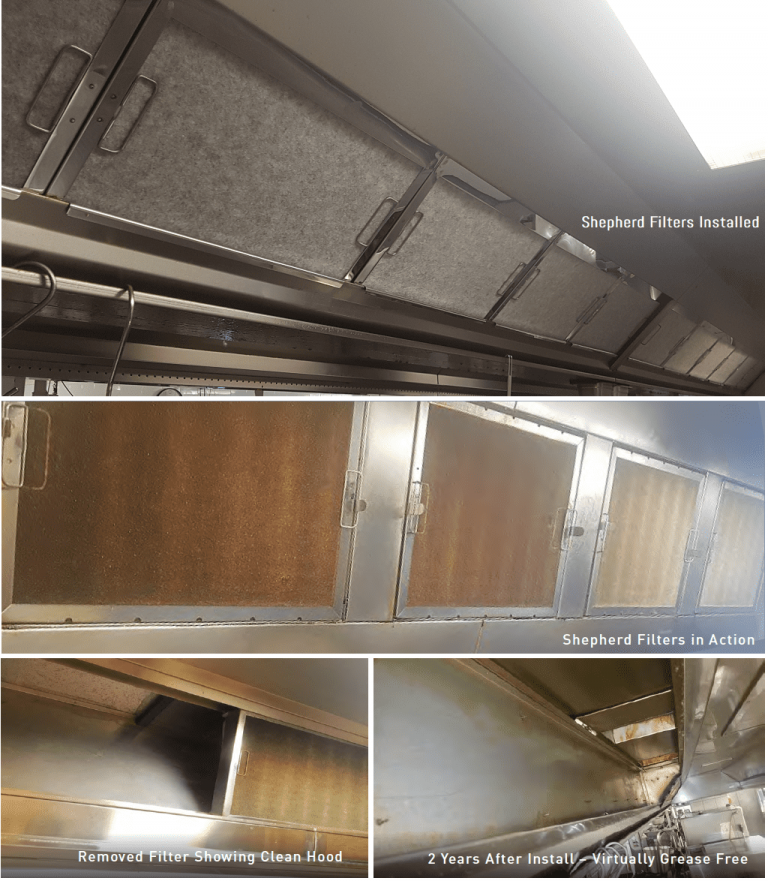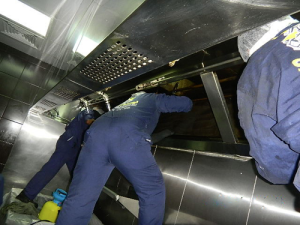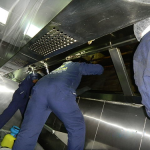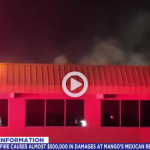Commercial Kitchen Protection Against Fires Spreading

In this article, we take a moment to look at best practice for the fire-safe design of commercial kitchens.
Commercial kitchens are the heart of every good dining establishment, but they can also present a high risk of fire. Fires in restaurants and cafés represent 42 per cent of all fires within the food and drink sector. High-profile chains such as Byron, Prezzo, Strada and Jamie’s Italian have all suffered significant fire damage in recent years, not only to the premises but also to the brand. And it is not just high street or budget chains that are affected. In 2019, Gymkhana, the Michelin-starred Indian restaurant on Albemarle Street in Mayfair, closed after a fire at the restaurant resulted in eight fire engines and about 60 firefighters being called to a blaze which spread through the ground-floor kitchen and up the ducting to roof level.
So, what can designers do to help prevent and protect against fire spreading? Geoff provides several tips in his article, however, the most important aspect of design when it comes to commercial kitchens is undoubtedly the extract ductwork. Fire investigations almost invariably show that it leads to the most extensive damage.
A fire that originates within the kitchen or at the hood filters can spread into and up the ductwork system, fuelled by the oil and grease within the duct. A fire within the duct can ignite combustible materials outside of the duct, via radiant heat transmission, or can ignite grease that has leaked out of duct seams, spreading the fire in the building. Because fire dampers are not allowed within kitchen exhaust ductwork, fire spread within and between ducts can compromise a building’s passive fire protection such as fire-rated compartments.

A fire within the duct system generally occurs due to the ignition of flammable material (usually grease) that has built up at the grease removal device (filters) and within the ductwork. The combination of fuel, air movement and heat can result in a strong and significant fire event.
The single most important thing you can do to keep your commercial kitchens exhaust system safe is to regularly inspect and keep it clean.
Ducts should be sealed to prevent leaks and access (if limited) should be improved to facilitate routine cleaning. Make sure you are correctly insured and discuss with your cleaning contractor any safety hazards or compliance issues in your system.
With kitchen grease filters being the first line of defence against grease build-up in the ductwork, research into better alternatives such as UL1046 baffle filters to reduce flame penetration into the duct should be considered.
Shepherd Filters frames are proudly UL1046 certified and the wool filter media that is used in conjunction with our baffle frames makes them highly effective by capturing up to 98% of airborne grease before it gets into the rest of the kitchen exhaust system.
Therefore, it provides immediate savings by reducing labour costs associated with commercial cleaning metal grease filters. It also reduces the frequency and extensive nature of routine kitchen duct cleaning dramatically.

Shepherd Filters are proudly made from 100% wool – a naturally fire-retardant febre. The filter media is carbon-neutral and will break down in the landfill within weeks depending on conditions.
Contact us today for an obligation-free assessment as to whether Shepherd Filters is the solution for your commercial kitchen!
Share this post
Related posts

Comercial Kitchen Safety Starts with Clean Hoods

SHEPHERD FILTERS to Exhibit at NRA 2025 in Chicago

Kitchen Duct Fire at Luxury London Hotel

SHEPHERD FILTERS Shines at RFMA 2025 in Las Vegas
RECENT POSTS

Comercial Kitchen Safety Starts with Clean Hoods

SHEPHERD FILTERS to Exhibit at NRA 2025 in Chicago

Kitchen Duct Fire at Luxury London Hotel

SHEPHERD FILTERS Shines at RFMA 2025 in Las Vegas

Kitchen Grease Fire Damages Food Court

Grease fire causes nearly $500,000 in damages
